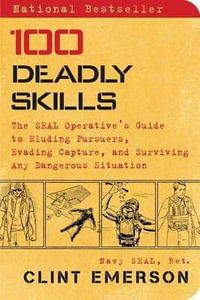'Anton de Groot has outdone himself!
In Monographs in Contact Allergy, he has provided a 2 volume-catalog of close to 500 non-fragrance chemicals in cosmetics that span the common and the rare.
This authoritative compendium will be a useful resource for those of us -- academicians, practitioners, industry professionals -- who manage, study, and think about individuals with contact dermatitis.'
- Ponciano D. Cruz, Jr., MD, Editor-in-Chief, Dermatitis
'This two-part 1430 pages book written by Anton de Groot presents 500 monographs on chemicals and substances that have caused contact allergy / allergic contact dermatitis by their presence in cosmetics. Each monograph begins with the section "Identification": name, description/definition, chemical class, IUPAC name, other names, CIR and SCCS data, functions in cosmetics, patch testing advice, chemical formula and (beautifully drawn) structural formulas. In each monograph, data are provided (if such information is available) on results of patch testing in unselected patients suspected of contact dermatitis (routine testing), testing in selected patient groups (e.g., individuals suspected of cosmetic reactions, patients with leg ulcers, hairdressers, children, patients with periorbital dermatitis), case reports and case series of cosmetic allergy, allergy from non-cosmetic products, cross-reactivity, patch test sensitization, provocation tests, dilution series testing, chemical analyses and frequency of use in cosmetics in the USA (including recent data from FDA's Voluntary Cosmetic Registration Program). Next, info is provided on irritant contact dermatitis, immediate contact reactions, non-eczematous adverse effects, systemic side effects and other relevant data. In other words, the monographs are not limited to cosmetic allergy but provide full reviews. Many are 1-3 pages only, but some monographs have >10 pages (e.g.,benzophenone-3, chlorhexidine digluconate, imidazolidinyl urea, propylene glycol), >20 (colophonium, formaldehyde, methylisothiazolinone) and even >30 pages (MCI/MI and p-phenylenediamine).
Because of our special interest in p-phenylenediamine, I have studied this monograph carefully and it proved to give a clear, informative, complete, very useful and detailed review of contact allergy and other side effects of p-phenylenediamine in hair dyes and other products with no less than 344 literature references. A nice touch was a bit of history about the French chemist Eugene Schueller, who marketed the product at the beginning of the 20th century with his French Harmless Hair Dye Company, from which L'Oreal developed. Knowing Anton, I am sure he has spent the same amount of energy and accuracy in all other monographs. Following the section with monographs (1325 pages) there are smaller chapters on immediate contact reactions, photosensitivity, a complete list of cosmetic functional groups (preservatives, sunscreens, humectants et cetera) and all chemicals in these groups that have caused cosmetic allergy, followed by a 30-page alphabetical list of synonyms referring to the names used for the monograph titles (INCI names where available).
After Patch Testing and Essential oils, this is yet another phenomenal reference book from Anton, which will make our work in the patch testing clinic easier and more fruitful and which is also very helpful for authors. I am looking out for the next two volumes in the Monographs series on Fragrances (volume II) and Topical and systemic drugs (Volume III).'
- M.L.A. Schuttelaar, University Medical Center Groningen, Groningen, The Netherlands for the European Society of Contact Dermatitis
'The 2-volume, 1430-page publication provides a complete overview of the full knowledge of non-"fragrance" cosmetic allergens, and can be recommended for dermatologists and allergologists alike and also specialists indicating, performing and evaluating patch tests as an essential tool like the "Bible" in their practice.'
- Prof. Erzsebet Temesvari, MD, PhD
'I have had the opportunity to review the textbook entitled Monographs in Contact Allergy: Non-Fragrance Allergens in Cosmetics (Parts 1 and 2) published by CRC Press, Boca Raton, FL, 2018, and written by Anton C. de Groot. The author is well known for his textbook Patch Testing. His latest monograph is an encyclopedic publication that is composed of 2 textbook-sized volumes as a set that describe a total of 497 chemical ingredients that have caused contact allergy or allergic contact dermatitis by their presence in cosmetic product... This monograph is highly recommended and is a comprehensive reference that best serves the needs of dermatologists or allergists involved in the advanced practice of patch testing. It contains concise summaries of each of the 497 chemical ingredients described, is well referenced, and also contains practical information about patch testing concentrations of these chemicals, especially for those ingredients that are less commonly encountered allergens'.
- Anthony A. Gaspari, MD
























